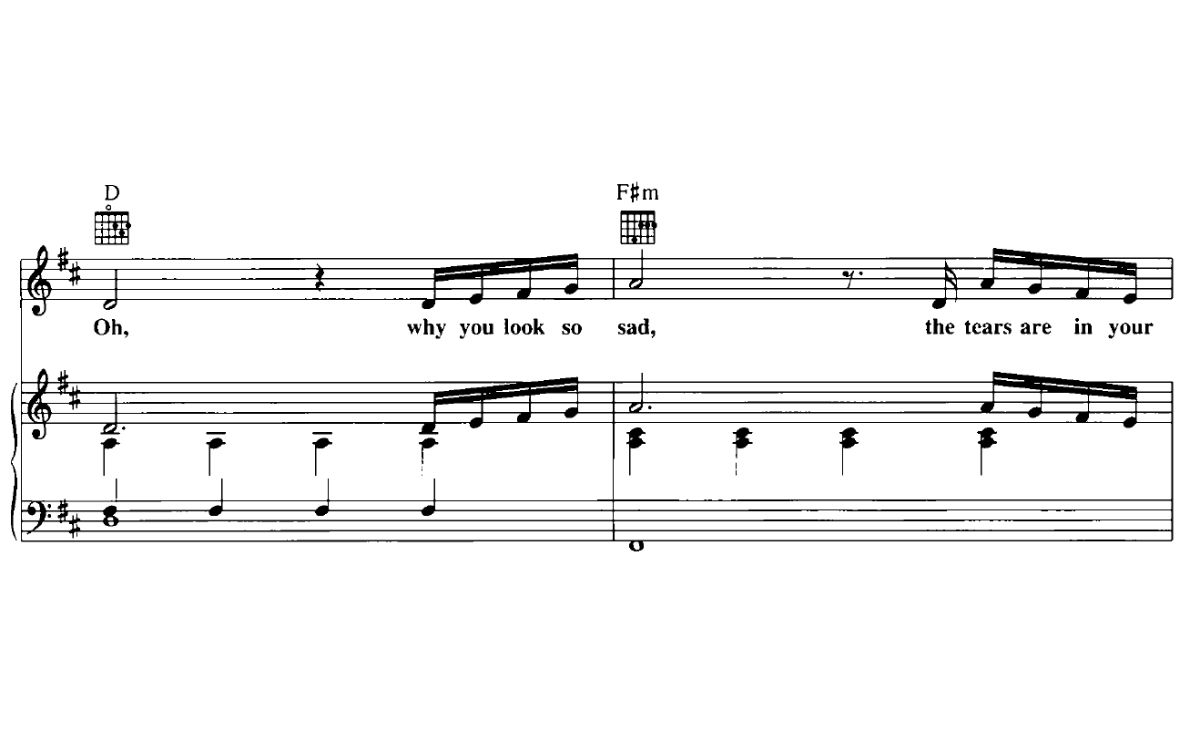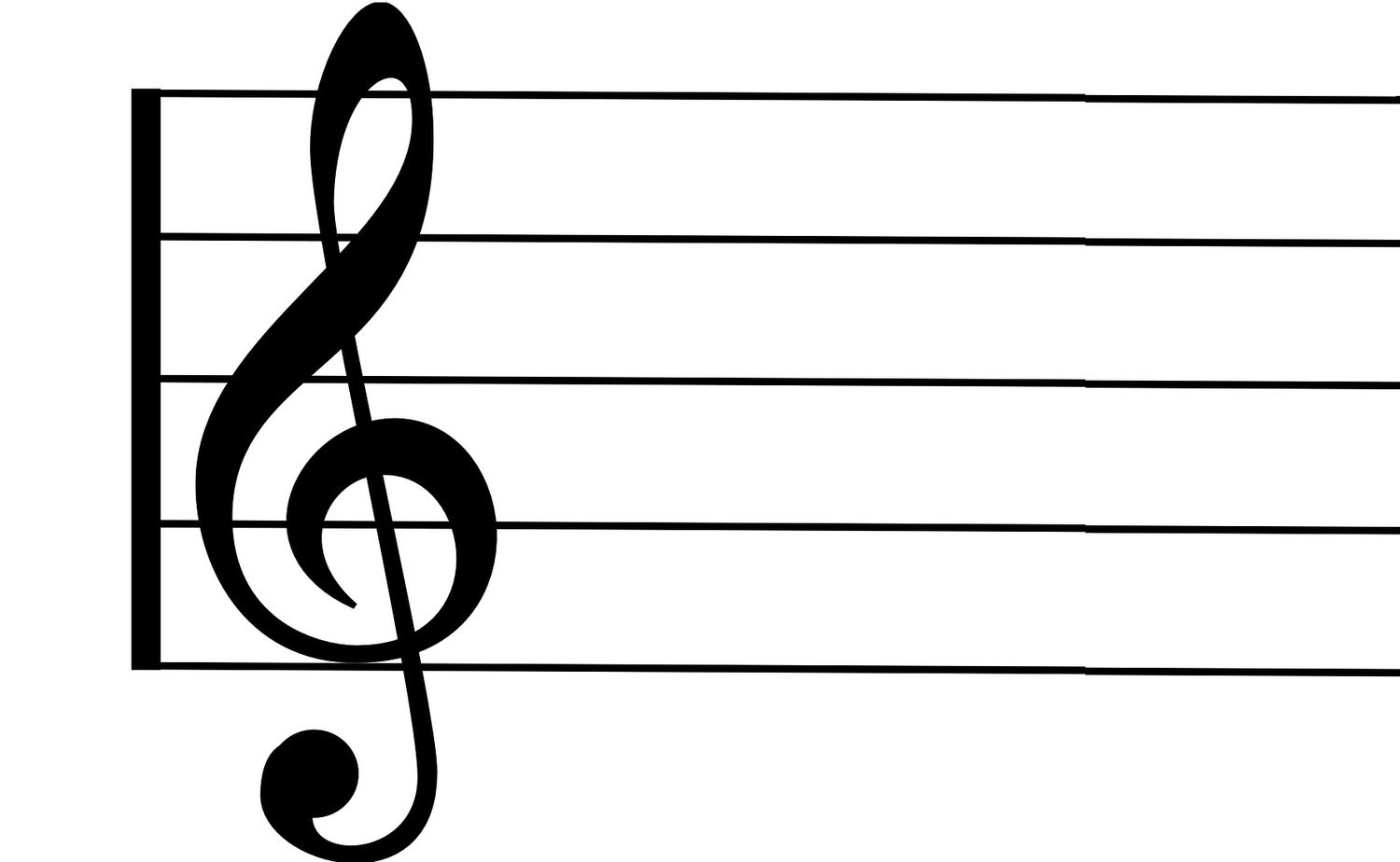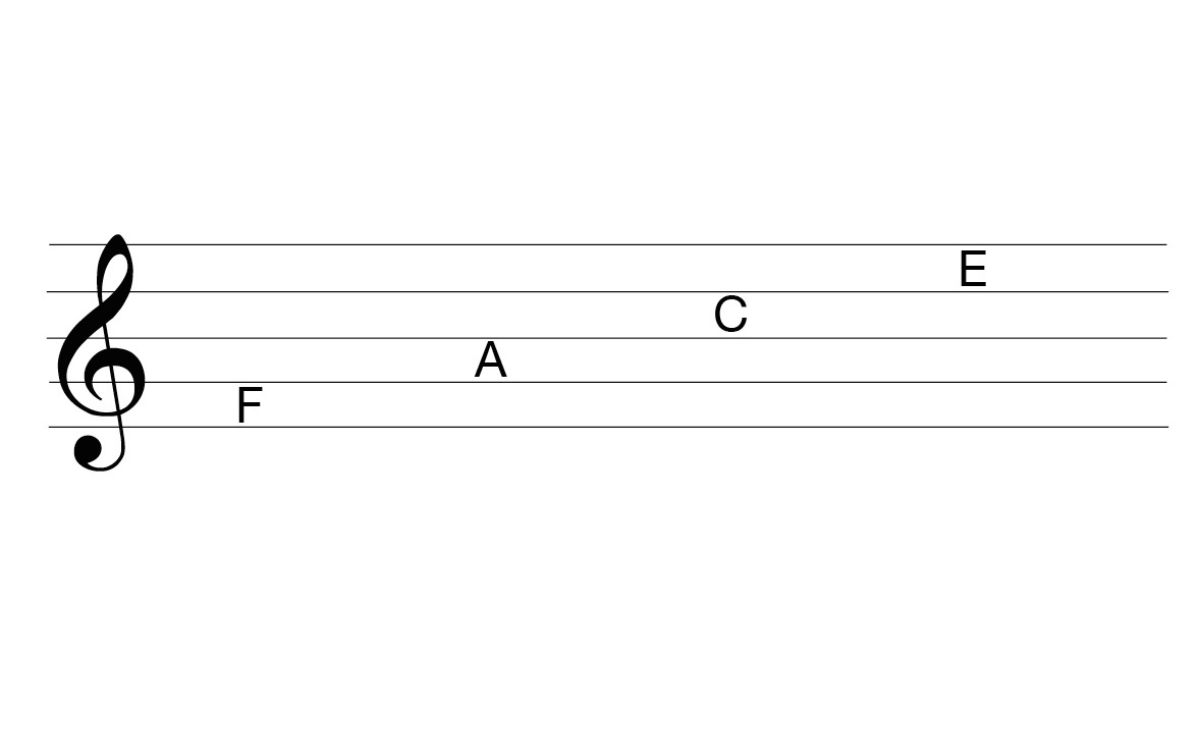Home>Production & Technology>Treble>How To Transpose Alto Clef To Treble Clef


Treble
How To Transpose Alto Clef To Treble Clef
Published: November 26, 2023
Learn how to effortlessly transpose music written in alto clef to treble clef with this comprehensive step-by-step guide. Master the technique of converting sheet music for treble instruments and expand your musical repertoire.
(Many of the links in this article redirect to a specific reviewed product. Your purchase of these products through affiliate links helps to generate commission for AudioLover.com, at no extra cost. Learn more)
Table of Contents
- Introduction
- Understanding the Alto Clef and Treble Clef
- Step 1: Identifying the Notes in the Alto Clef
- Step 2: Understanding the Relationship between Alto Clef and Treble Clef
- Step 3: Transposing Notes from Alto Clef to Treble Clef
- Step 4: Practice Exercises for Transposing Alto Clef to Treble Clef
- Conclusion
Introduction
The alto clef and treble clef are two commonly used clefs in music notation. The alto clef is primarily used for instruments in the viola and alto range, while the treble clef is used for instruments in the higher registers, such as the violin and flute.
Transposing notes from the alto clef to the treble clef is an essential skill for musicians, as it allows them to easily switch between different instruments or read sheet music written in treble clef. In this article, we will explore the process of transposing notes from the alto clef to the treble clef, step by step.
Transposing involves changing the pitch of a musical piece or notes without changing the intervals or relationships between the notes. By transposing notes from the alto clef to the treble clef, you will be able to play or read music written in treble clef, expanding your repertoire and versatility as a musician.
In the following sections, we will delve into understanding the alto clef and treble clef, identifying the notes in the alto clef, understanding the relationship between the two clefs, and finally, transposing notes from the alto clef to the treble clef. So let’s get started on this journey of transposing notes and expanding your musical horizons.
Understanding the Alto Clef and Treble Clef
Before we can begin transposing notes from the alto clef to the treble clef, it is important to have a solid understanding of both clefs.
The alto clef, also known as the C clef, is primarily used for instruments in the viola and alto range. It is characterized by the symbol of a curved line centered on the middle line of the staff. This line represents the pitch of middle C. When reading music in alto clef, the notes are positioned differently compared to the treble clef or the bass clef.
On the other hand, the treble clef, also known as the G clef, is widely used for instruments in the higher register such as the violin, flute, and soprano voice. It is represented by a stylized letter “G” that wraps around the second line of the staff.
Understanding the placement of the notes on the staff is crucial for transposing notes accurately. In musical notation, individual notes are represented by specific positions on the staff, indicating their pitch and duration. The higher the note on the staff, the higher its pitch.
The staff consists of horizontal lines and spaces, which represent the different pitches. Each line or space has a different note associated with it. For example, in the treble clef, the lines from bottom to top represent the notes E, G, B, D, and F, while the spaces represent the notes F, A, C, and E.
In the alto clef, the positioning of the notes is different. The middle line, which carries the symbol of the alto clef, represents the pitch of middle C. This means that the notes below the middle line in the alto clef are lower in pitch than their counterparts in the treble clef.
To further understand the difference, let’s compare the position of middle C in the two clefs. In the treble clef, middle C is positioned one ledger line below the staff, while in the alto clef, it coincides with the middle line.
Now that we have a basic understanding of the alto clef and treble clef, we are ready to delve deeper into the process of transposing notes from the alto clef to the treble clef.
Step 1: Identifying the Notes in the Alto Clef
Before we can transpose notes from the alto clef to the treble clef, it is crucial to be able to identify and understand the notes in the alto clef. This will serve as our foundation for the transposition process.
In the alto clef, the notes are positioned differently compared to the treble clef. The middle line of the staff in the alto clef represents the pitch of middle C. From that reference point, we can determine the notes above and below middle C.
Starting from the bottom line and moving up, the notes in the alto clef follow the sequence: E, G, B, D, F. These are the notes represented on the lines of the staff. In the spaces between the lines, the notes follow the sequence: F, A, C, E.
It’s important to familiarize yourself with the placement of these notes on the staff and their corresponding pitches. Begin by practicing identifying each note on the staff and saying its name out loud. This will help reinforce your understanding of the alto clef and its notes.
One helpful tip for memorizing the notes in the alto clef is to use mnemonic devices. Mnemonic devices are memory aids that can help you remember information more easily. For example, you can use the phrase “Every Good Boy Does Fine” to remember the notes on the lines (E, G, B, D, F). Similarly, the phrase “Funky Alligators Can Eat” can be used to remember the notes in the spaces (F, A, C, E).
By understanding and memorizing the notes in the alto clef, you will be well-equipped to move on to the next step of transposing notes from the alto clef to the treble clef.
In the next section, we will explore the relationship between the alto clef and treble clef and how the transposition process works. Stay tuned!
Step 2: Understanding the Relationship between Alto Clef and Treble Clef
Now that we have a solid grasp of the notes in the alto clef, it’s time to explore the relationship between the alto clef and treble clef. Understanding this relationship will enable us to effectively transpose notes from one clef to the other.
The alto clef and treble clef have a close relationship since they share the same set of pitches. The main difference lies in the positioning of the notes on the staff. In the treble clef, the notes are higher in pitch compared to the same notes in the alto clef.
To transpose notes from the alto clef to the treble clef, we need to move each note up by a specific interval. This interval is the same for every note and corresponds to the distance between the positions of the notes in the two clefs.
Let’s take middle C as our reference point again. In the alto clef, middle C is represented by the middle line of the staff. In the treble clef, middle C is located one ledger line below the staff.
To transpose a note from the alto clef to the treble clef, we need to move it up by an interval of a major sixth. This means that every note in the alto clef will be transposed up by six steps in the treble clef. For example, if we have a note E on the bottom line of the staff in the alto clef, it will be transposed to the note C in the treble clef.
It’s important to note that this interval of a major sixth is consistent for all the notes in the alto clef, regardless of their position on the staff. By understanding this relationship, we can proceed to the next step of transposing notes from the alto clef to the treble clef.
In the following section, we will dive into the actual process of transposing the notes. Stay focused and keep your musical skills sharp!
Step 3: Transposing Notes from Alto Clef to Treble Clef
Now that we have a solid understanding of the relationship between the alto clef and treble clef, we can delve into the process of transposing notes from the alto clef to the treble clef.
Transposing notes involves moving each individual note from its original position in the alto clef to its corresponding position in the treble clef. Remember that we need to move each note up by a major sixth interval.
To transpose a specific note, start by identifying its position in the alto clef. Determine the note’s pitch and its placement on the staff. Then, imagine moving that note up by six steps in the treble clef.
Let’s take an example to illustrate the process. Suppose we have a note D in the alto clef, which is located on the third line. To transpose this note to the treble clef, we need to move it up by a major sixth. As a result, the transposed note will be B in the treble clef, which is located on the third line as well.
It’s important to emphasize that the distance between the notes in the alto clef and the treble clef remains the same. Each note, when transposed, maintains its relative position compared to the other notes. This ensures that the musical intervals and relationships between the notes are preserved.
Repeat this process for each note in the alto clef, transposing them one by one to the treble clef. Take your time and make sure to accurately move each note to its corresponding position. Practicing this process will help you become more comfortable with transposing notes and reading music in different clefs.
Remember to pay attention to any key signatures or accidentals indicated in the music. These indicators may affect the transposition process and require adjustments to the transposed notes.
With practice and patience, you will become proficient in transposing notes from the alto clef to the treble clef. This skill opens up a world of possibilities, allowing you to easily switch between different instruments or read music written in treble clef.
In the next section, we will explore some practice exercises to solidify your understanding of transposing from the alto clef to the treble clef. Get ready for some musical challenges!
Step 4: Practice Exercises for Transposing Alto Clef to Treble Clef
Now that we have learned the process of transposing notes from the alto clef to the treble clef, it’s time to put our skills into practice. Here are some exercises to help solidify your understanding and proficiency in transposition:
- Take a piece of sheet music written in the alto clef and transpose it to the treble clef. Start with simple melodies or exercises to build confidence. Make sure to apply the transposition process we learned, moving each note up by a major sixth interval.
- Create your own melodies or short tunes in the alto clef, and then transpose them to the treble clef. This exercise will give you a chance to apply the transposition process creatively. Experiment with different rhythms and note patterns.
- Practice sight-reading music written in the alto clef and immediately transpose it to the treble clef as you play. This exercise will help you develop your transposition skills in real time, enhancing your ability to switch between clefs on the fly.
- Work with a partner or a fellow musician. Have them play a melody in the alto clef while you simultaneously transpose and play it in the treble clef. This exercise will improve your listening skills and coordination with other musicians.
- Apply transposition to different musical genres and styles. Take a piece of classical music written in the alto clef and transpose it to the treble clef. Then, try the same process with a piece of jazz or pop music. This exercise will enhance your versatility in transposing across various musical genres.
Remember, practice is key when it comes to transposing notes. By consistently working on these exercises, you will gradually become more comfortable and proficient in transposing from the alto clef to the treble clef.
Don’t be afraid to challenge yourself and push the boundaries of your transposition skills. As you become more confident, you can explore transposing between other clefs, such as the bass clef or tenor clef.
Keep in mind that transposing notes is a valuable skill that can greatly enhance your musical abilities. It allows you to expand your repertoire, collaborate with different instrumentalists, and effortlessly navigate sheet music written in different clefs.
Congratulations on completing the practice exercises! In the next section, we will wrap up our journey of transposing notes from the alto clef to the treble clef.
Conclusion
Transposing notes from the alto clef to the treble clef is a valuable skill for musicians, enabling them to navigate different instruments and read music written in treble clef. By understanding the relationship between the alto clef and treble clef and following the steps outlined in this article, you can successfully transpose notes with accuracy and confidence.
Throughout this journey, we explored the fundamentals of the alto clef and treble clef, identified the notes in the alto clef, understood the relationship between the two clefs, and learned the process of transposing notes. We also practiced exercises to reinforce our understanding and develop our transposition skills.
Remember to approach transposition with patience and practice. Consistent practice will help you internalize the process and strengthen your ability to transpose notes accurately. By honing this skill, you open up a world of opportunities and broaden your musical horizons.
Whether you are an instrumentalist, vocalist, or aspiring composer, being able to transpose notes between clefs is a valuable asset. It allows you to perform a wider range of repertoire, collaborate with other musicians more effectively, and adapt to different musical settings.
So, keep practicing, experimenting with different musical pieces, and challenging yourself to transpose notes in various styles and genres. As you continue to sharpen your skills, transposing between the alto clef and treble clef will become second nature to you.
Congratulations on embarking on this journey of transposition! Now go forth, embrace the beauty of the treble clef, and let your musical expression shine.











